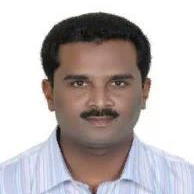International Journal of Image, Graphics and Signal Processing (IJIGSP)
IJIGSP Vol. 4, No. 6, 8 Jul. 2012
Cover page and Table of Contents: PDF (size: 156KB)
Classification and Recognition of Printed Hindi Characters Using Artificial Neural Networks
Full Text (PDF, 156KB), PP.15-21
Views: 0 Downloads: 0
Author(s)
Index Terms
Pattern Recognition, Character Recognition, Artificial Neural Network, Feature extraction, Thinning
Abstract
Character Recognition is one of the important tasks in Pattern Recognition. The complexity of the character recognition problem depends on the character set to be recognized. Neural Network is one of the most widely used and popular techniques for character recognition problem. This paper discusses the classification and recognition of printed Hindi Vowels and Consonants using Artificial Neural Networks. The vowels and consonants in Hindi characters can be divided in to sub groups based on certain significant characteristics. For each group, a separate network is designed and trained to recognize the characters which belong to that group. When a test character is given, appropriate neural network is invoked to recognize the character in that group, based on the features in that character. The accuracy of the network is analyzed by giving various test patterns to the system.
Cite This Paper
B.Indira,M.Shalini,M.V. Ramana Murthy,Mahaboob Sharief Shaik,"Classification and Recognition of Printed Hindi Characters Using Artificial Neural Networks", IJIGSP, vol.4, no.6, pp.15-21, 2012. DOI: 10.5815/ijigsp.2012.06.03
Reference
[1]Jie Liu, Jiguisun, Shengshenq wang – “Pattern Recognition – An Overview” International journal of computer science and network security, Vol.6, No. 6, June 2006.
[2]Dr. P.S. Deshpande, Mrs. Latesh Malik, Mrs. Sandhya Arora “Characterizing Hand written Devanagari Characters using Evolved Regular Expressions”, 1-4244-0549-1/06, IEEE 2006.
[3]Veena Bansali “Integrating with source in Devanagari text recognition”, PhD thesis , 1999.
[4]Aditi Goyal,Kartikay Khandelwal, piyush Keshri, “Optical Character Recognition for Handwritten Hindi”, Stanford University, CS229 Machine Learning, Fall,2010.
[5]Pooja Agarwal, M. Hanmandlu, Brejesh Lall, “Coarse classification of Handwritten Hindi Characters”, International Journal of Advanced Science and Technology, Vol. 10, September, 2009.
[6]Raghuraj Singh, C. S. Yadav, Prabhat Verma, Vibhash Yadav, “Optical Character Recognition (OCR) for Printed Devnagari Script using, Artificial Neural Network”, International Journal of Computer Science & Communication Vol. 1, No. 1, January – June 2010, PP. 91-95.
[7]Latesh Malik, P. S. Deshpande “Recognition of Printed Devanagari Characters with Regular Expression in Finite State Models”, proceedings of International workshop on Machine Intelligence Research, 2009.
[8]Veena Bansal and R.M.K. Sinha “Segmentation of Touching and Fused Devanagari Characters” IIT, Kanpur.
[9]Swamy Saran Atul and Swapneel Prasanth Mishra “ Hand-Written Devnagari Character Recognition”, NIT, Rourkela, 2007.
[10]Line Eikvil “Optical Character Recognition”, December, 1993.
[11]Dyashankar Singh, Sajay Kr. Singh, Dr. (Mrs) MitreyeeDutta, Hand Written Character Recognition Using Twelve Directional Feature Input and Neural Network – 2010 International Journal of Computer Applications(0975 – 8887) vol. 1 – No. 3.
[12]A.K.Jain, Mohiuddin “Artificial Neural Networks: A Tutorial”, IEEE Computers, 29, 31-44, 1996.
[13]Anil K. Jain, Orivind Due Trier and Torfinn Taxt “Feature Extraction Methods For Character Methods- A survey”, Pattern Recognition, Vol. 29. No 4, PP 641-662, 1996.
[14]B. Indira, “Artificial neural networks and its use in Automatic Recognition of Vehicle Registration Numbers”, Ph.D.thesis, 2008.
[15]Brain Clow – “A comparison of neural network training Methods for Character Recognition” – Carleton University April, 2003.
[16]Dave Anderson and George MCneil – “ A DACS state of the Art report on Artificial Neural Network Technology” – International Conference on Computer Vision – New York-2003.
[17]E.Barnard, “Optimization for Training Neural Nets “ IEEE transactions on Neural Networks, Vol. 3, No. 2 , March 1992, PP 232-240.
